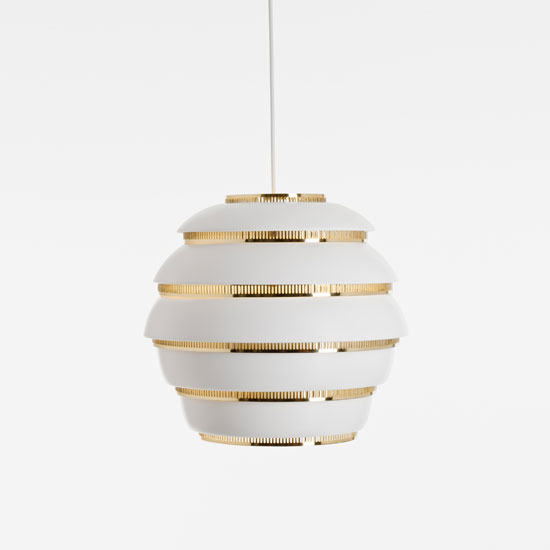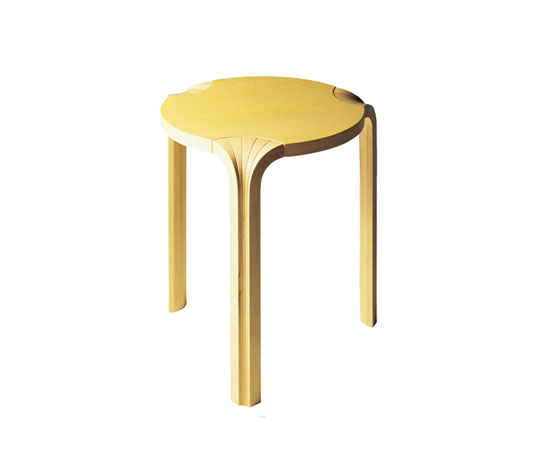Love in a Cold Climate: Architonic meets Artek chief Mirkku Kullberg
Texto por Simon Keane-Cowell
Zürich, Suiza
11.02.11
Few design brands evoke as much warmth on the part of consumers as the heritage-steeped Finnish company Artek, currently celebrating 75 years in business. Co-founded in 1935 by the hero of Scandinavian modernism Alvar Aalto, Artek has certainly earned its design stripes. Here, its managing director, Mirkku Kullberg, in conversation with Architonic during the recent Cologne Furniture Fair, discusses how the manufacturer's longevity is matched by its long-sighted, forward-facing vision.
With 75 years in business under its belt, it's pretty safe to say that Artek – the respected design brand co-founded by Finnish design and architecture legend Alvar Aalto – has proved itself, both commercially and culturally. But the company's ebullient managing director Mirkku Kullberg is determined to ensure that there's no resting on laurels. (Even birch ones.)
Northern lights: Artek shows Alvar Aalto's 'A330S' pendant lights at DROOM's Cologne showroom as part of its 75th-anniversary installation during January's furniture fair

Northern lights: Artek shows Alvar Aalto's 'A330S' pendant lights at DROOM's Cologne showroom as part of its 75th-anniversary installation during January's furniture fair
×Meeting up with Architonic at Artek's small, but beautifully formed, anniversary installation at the DROOM showroom in Cologne during this year's furniture fair, Kullberg explained how the company is facing the future with a decidedly holistic vision, one which involves greater control of the whole design and production value chain, from raw materials to distribution and retailing.
Sustainability is, of course, part of the equation, too, but with their anti-fashion take on consumption and their commitment to the restoration and reselling of older Artek furniture pieces, all underpinned by a genuine desire for the brand to have an educative role in material-cultural landscape, it's a lot more than just talk. All very forward-thinking for a company with such impeccable heritage credentials. Who'd have thought it?
'Artek is something that moves between the worlds of art and design, art and architecture. This kind of area where you don't actually know what's right or wrong, but it makes you curious and drives you forward': Artek's managing director Mirkku Kullberg
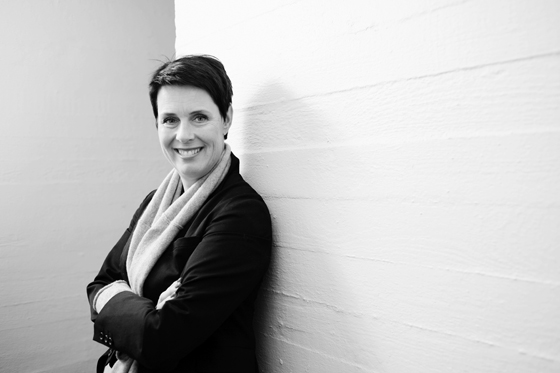
'Artek is something that moves between the worlds of art and design, art and architecture. This kind of area where you don't actually know what's right or wrong, but it makes you curious and drives you forward': Artek's managing director Mirkku Kullberg
×…..
It seems to be an exciting time for Artek. Your 75th anniversary, a growing collection of designs – both older pieces by some of the most celebrated names in Finnish design and new ones by contemporary international designers... The family's getting bigger.
Yes, it is. But Artek doesn't want to work with designers who are going to work on just one project. This is long-term and is very much a commitment. We think very thoroughly about who we want to work with.
'[Aalto's] legacy can be a benefit and burden', says Artek managing director Mirkku Kullberg. Seen here, some classic Aalto designs as part of the company's recent 75th-anniversary installation at the DROOM showroom in Cologne
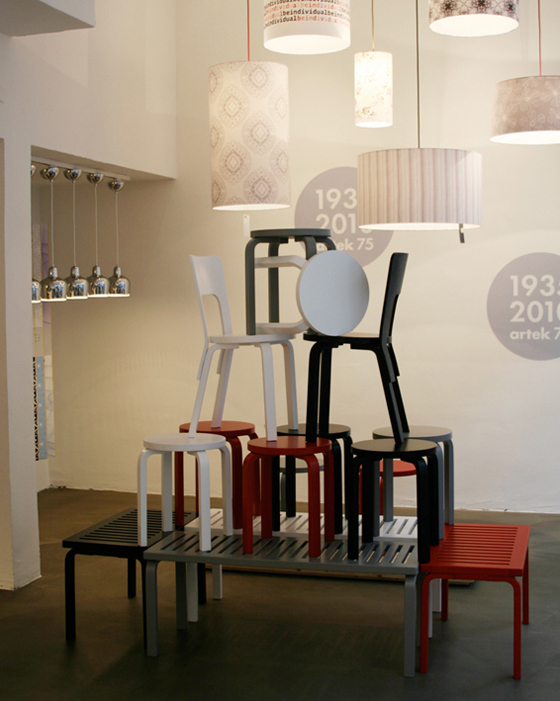
'[Aalto's] legacy can be a benefit and burden', says Artek managing director Mirkku Kullberg. Seen here, some classic Aalto designs as part of the company's recent 75th-anniversary installation at the DROOM showroom in Cologne
×What are the criteria then for deciding which designers you commission?
When we thought about Naota Fukasawa, for example, it was very much about his understanding of simple design. Design in our opinion had become very extravagant, very superficial. Lots of companies were introducing new designs simply because they were new and had a visual impact. Just getting the media publicity. Products didn't have any longevity, didn't live. What Naoto is doing is creating modern classics. Whatever he does is something that you just get more and more committed to the longer you have it. It's not just something you buy because it's just a funny thing. In a way, it's a serious beauty, which I like. All of Artek's products should be like this. Products that last.
Alvar Aalto's 'Chair 66', designed in 1935 and still in production by Artek, shown here with a black-lino seat
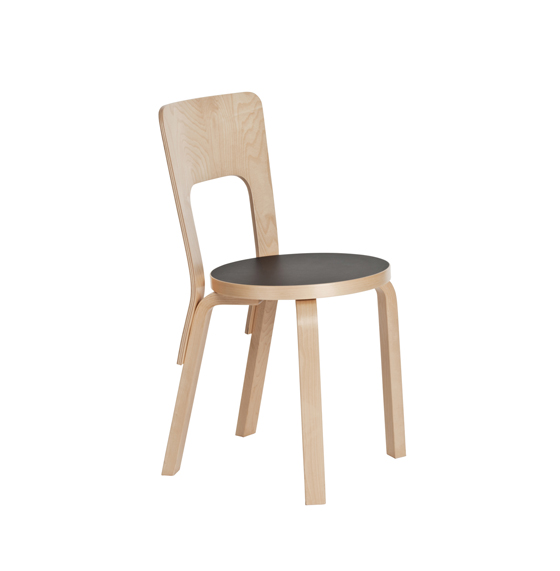
Alvar Aalto's 'Chair 66', designed in 1935 and still in production by Artek, shown here with a black-lino seat
×Could you describe them as unfashionable, in the best sense of the word? Anti-trend?
Exactly. This idea of trends, which has been brought in from the fashion industry... I worked for 20 years in fashion and left in the end because, when I started, I worked with two or four seasons, but, at the end, there were 24 seasons, or collections. And, somehow, this tendency started to appear in the design industry. Which is a pity. Design should be about need factors and not only desire. It's fun, yes, but we still have plenty of things around that address that. So what does the future consumer want to have? We actually don't need anything anymore. So we have to be very clever about what we do. Intelligent.
Aalto's architectural Gesamtkunstwerk, the 1930 Paimio Sanatorium in southern Finland, featured a number of his furniture designs created specifically for the project. Here, his 'Armchair 41', made of his signature wood, birch
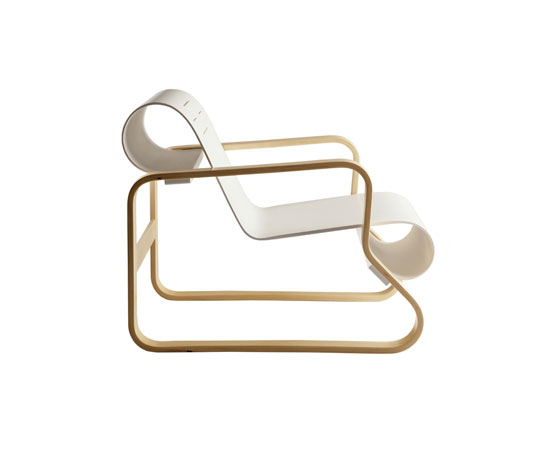
Aalto's architectural Gesamtkunstwerk, the 1930 Paimio Sanatorium in southern Finland, featured a number of his furniture designs created specifically for the project. Here, his 'Armchair 41', made of his signature wood, birch
×It's a question of ethics, too, I guess. Take the Milan Furniture Fair. Exciting to see all those new products, but it does make you think about the rate at which the design industry produces and responds to a seemingly insatiable desire to consume.
I wonder how long the novelties that you see there live. How many of the new products are still alive two weeks after the fair? Or a year later? Or ten years later? I don't think that everything should last for ever, but I do think there should be more common sense about it.
Japanese master of form Naoto Fukasawa's perfectly reduced and highly functional 'Shelving System' for Artek, launched in 2010
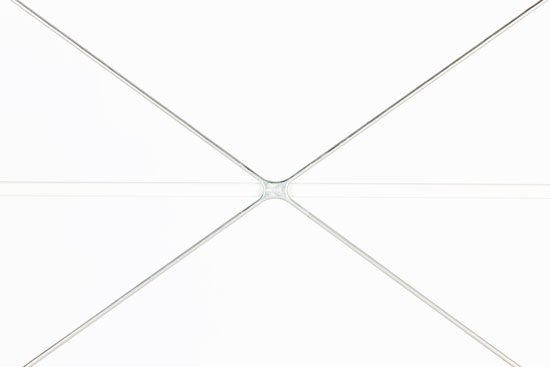
Japanese master of form Naoto Fukasawa's perfectly reduced and highly functional 'Shelving System' for Artek, launched in 2010
×Artek is a renowned and important company – brand if you will – in design history. It has a very big legacy – Alvar Aalto as co-founder and so on. What kind of responsibilities does that come with for you in terms of heading up a modern design company?
Well, this kind of legacy can be a benefit and burden. Rather than sticking to what Aalto did, I think it's about thinking about what he thought about design, and these products – these chairs, these stools – are concretised thinking. We have been trying to open up the legacy from a completely different angle and thinking about his desire to educate: he wanted people to understand design, to consumer cleverly. He was very much about modern technology, developing with the carpenters a kind of multi-sensual design, where you really have to touch the product and feel the raw material, and really get involved with this simple design. You eye doesn't ever get tired of these products, in a way.
But we think that if we don't move forward, we actually undermine the legacy. We should be questioning the same things today. And, also, all of his products have a very deep relationship with interiors and architecture, and that's what we want to do today. Which is why we started working with Shigeru Ban. We'll be working with more architects. We want to work with designers to create something that has an connection to the actual spaces where people live. But the way we live is changing. Our lives, our homes are different to the way they were 75 years ago. So this is what we are currently working on. We want to take the legacy further, but also to somehow question or oppose the design mainstream. It's our duty to follow our own rocky road sometimes. I think everyone is inspired by that. So, yes, good ethics, good aesthetics but also education: how to question things and to make people think. We definitely need to move forward because stagnating was never Aalto.
'Serious beauty' is how Artek MD Mirkku Kullberg describes the company's products. Here, Alvar Aalto's 'Stool E60', designed in 1933
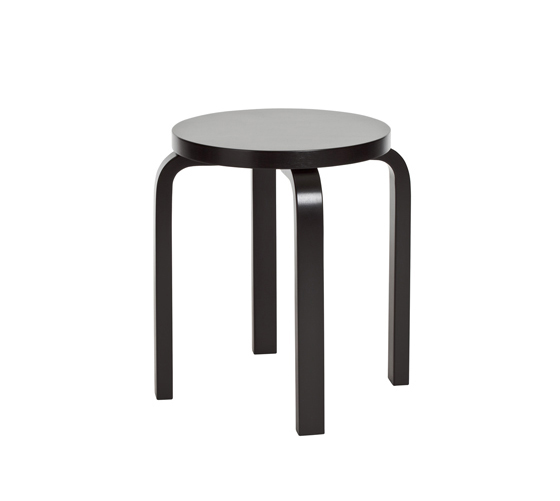
'Serious beauty' is how Artek MD Mirkku Kullberg describes the company's products. Here, Alvar Aalto's 'Stool E60', designed in 1933
×Well, the modernists – Aalto among them – were themselves innovators, so innovation in Artek's case is its legacy, I guess.
I wanted to ask you about materials. Certain materials, such as birch, are closely associated with the company's products. I wondered how open you are, in the spirit of innovation, to experimenting with new materials.
We are doing this quite a lot now. We now have our own design and development department, which is a very creative hub. Our new design director is interested in new sustainable materials. And we're very interested in reusing our old furniture, introducing new technology to bring those pieces back to life. You know we've been buying old Artek furniture back. Now we're looking at robot technology for the painting and finishing. That's one part of it. But we're looking at the lighting scene, too, and what we need for the future, what the possibilities are to develop in that area. We are, of course, specialists in wood. Yesterday, we bought a 49% share of one of Finland's key manufacturers of wood for furniture companies. We feel we need to own the process, the value chain in total. Artek has up until now sourced the material. Now we want to own this as part of the company, so we can bring the product development closer to the carpenters and the actual work, and to develop something new. And in October we bought the Ilmari Tapiovaara range, which is also wooden furniture, but in pine. Pine is undervalued and Tapiovaara made a great collection from it. But we're also interested in owning the distribution and the retailing in the future. The question is what is the future of retailing?
After Mart Stam and Marcel Breuer's experiments in cantilevered furniture came Aalto's 'Armchair 400' in 1936, with, typically, the use of birch instead of tubular steel
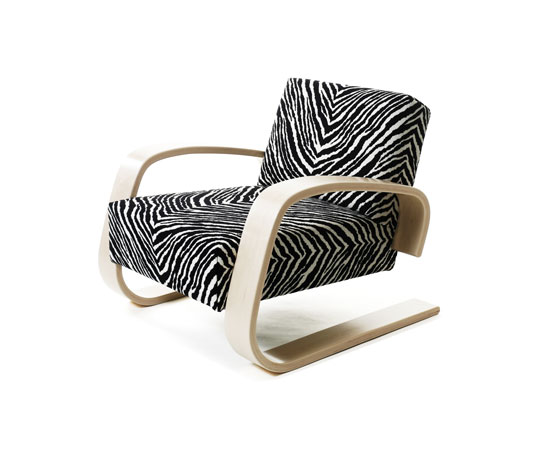
After Mart Stam and Marcel Breuer's experiments in cantilevered furniture came Aalto's 'Armchair 400' in 1936, with, typically, the use of birch instead of tubular steel
×I'm the proud owner of a Tapio Wirkkala 'TW001' lamp, launched by Artek last year. It's wrong to describe it as a re-issued piece because it was never before produced. Can you say a few words about how this piece came to be put into production several decades after it was first designed?
There are a number of hidden jewels in Nordic design. Particularly in Finland after the war there were some really brilliant designers working in the glass industry, in furniture and lighting. But there wasn't enough demand and the Finns have never been that good at distribution and commercialising these things, so they disappeared into the archives. And now that we have the rights to work with Tapio Wirkkala lighting and Ilmari Tapiovaara furniture, our portfolio is much wider, and we can bring any other Nordic or some other designer into the collection. And if we have our own production facilities and sourcing, we can do it. Things disappeared because there wasn't enough production and not enough demand.
Renowned Finnish designer Tapio Wirkkala's 'TW001' table lamp, put into production in 2010 by Artek, decades after it was designed
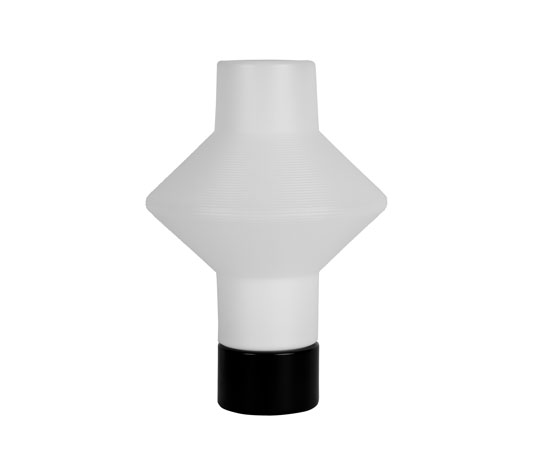
Renowned Finnish designer Tapio Wirkkala's 'TW001' table lamp, put into production in 2010 by Artek, decades after it was designed
×And why is, or was, Finland not so good at distribution and the commercial side of things, do you think?
Well, this is something we often think about ourselves, that the Swedes are really good at making distribution and retail happen. And it's true. They have always been sales people. And we're, or rather we were, very much this engineering type of country that was good at developing things, but not making the business happen. But there's a change happening there. Maybe Nokia have something to do with it. If you think about Apple, it's all about branding and retail. Nokia was all about technology and this engineering talent. Now we need a new face in our country. So maybe we'll borrow some talents. (Laughs.)
Alvar Aalto's iconic 'Pendant Lamp A331', first produced in 1953
Artek seems to be one of these brands that people connect with emotionally, with a certain kind of warmth. I think it's fair to say this. Why do you think that is?
It's a brand which is very easy to get passionate about. A lot of it for me is about ambition and getting better results, but somehow, through Artek, you also want to change the world: you want to change the design industry, you want to change consumption. Artek is something that moves between the worlds of art and design, between art and architecture. This kind of area where you don't actually know what's right or wrong, but it makes you curious and drives you forward. You never ever feel like it's done or complete. It's never boring, but always inspiring. But I also think it's fair to say that it's been a slow brand and that being slow is, nowadays, a good value. It's a brand which you can rely on, which you can stand beside and believe in.
Expressive modernism: Aalto's 'X600' stool, designed in 1954 and produced by Artek
And would you describe it as a Finnish brand?
No. I would definitely describe it as international. A wider, thinking brand. You don't need to be big, but you need to be interesting, and people want to be associated more with this smaller brands that have something to say, rather than with these completely global brands that are so big they can't find their roots or their basic ideas anymore.
So, that's the first 75 years completed. What does the future hold for Artek?
We're really interested in thinking more about the human mind. About the psychological. What do we really need? What can design do for us? But also to think about the home. How is this going to change? How are economic changes going to impact on this? And we're talking about creating this model where good design is an investment and the reselling value is something that can be guaranteed when you come to sell it. So we're developing the business model, while developing the products towards these kinds of need factors.
Mirkku, thanks very much.
.....
Related features:











